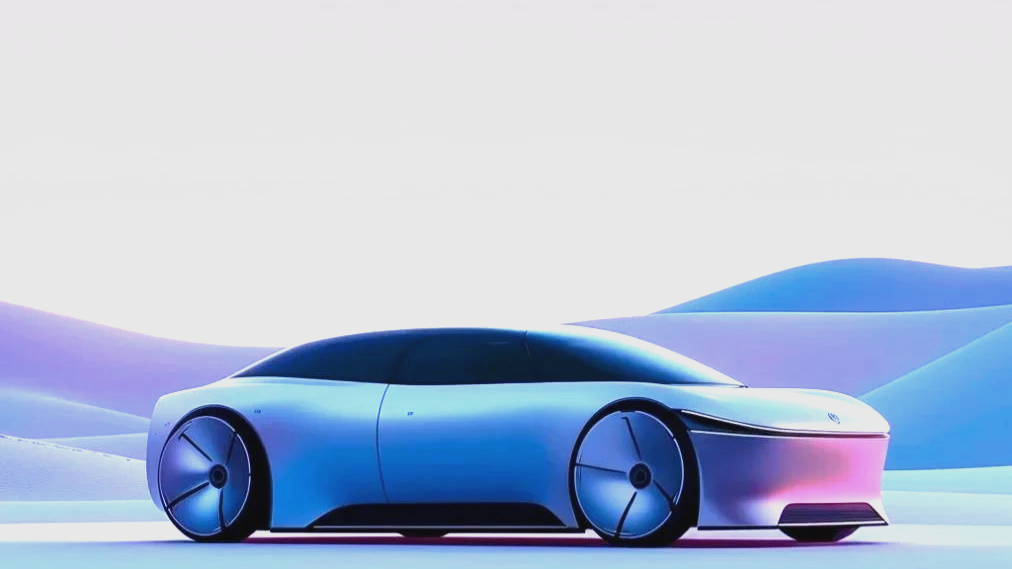
Heraclitus once said, “Everything flows,” and today’s automotive industry is undergoing a transformation more profound than the waters of Thales. The winter of 2024 will undoubtedly be remembered as a defining moment when the launch of DeepSeek-R1 became an industry focal point, instantly igniting global attention and establishing AI technology as the core topic of discussion. As leading automakers including BYD, Geely, Leapmotor, Dongfeng, and Chery rapidly integrated DeepSeek—this silicon-based lifeform woven from over 671 billion parameters—they not only redefined the very concept of the “automobile” but also tore open a new chapter in technological evolution.
At Tesla’s Shanghai Gigafactory, robotic arms weld car bodies with 0.02mm precision; SAIC-GM-Wuling’s “Lingxi” system predicts driver emotions through pupil tracking; BYD’s DiSus system uses AI for real-time chassis adjustments; while Nexen’s automated tire defect detection system achieves unprecedented quality control accuracy. These developments collectively signal a fundamental revolution in automotive technology.
At Beijing’s Yizhuang testing grounds, autonomous vehicles equipped with large language models make life-or-death decisions during torrential rainstorms—demonstrating capabilities that transcend traditional automotive engineering. These machines, endowed with environmental cognition, emotional interaction, and even ethical judgment, are reshaping our philosophical understanding of what constitutes a “vehicle.”
This raises a fundamental question: As vehicles begin to exhibit human-like learning capabilities, emotional interaction, and moral reasoning, have we truly entered the era of “AI + Automotive”? The answer may lie in NIO’s 5G+quantum encryption battery swap stations, in AI-assisted new energy molecular design for power batteries, and within the neural networks of those autonomous vehicles making critical decisions in downpours.
01 / Fundamental Inquiry: Why the Natural Synergy Between AI and Automotive?
From the Turing Test to AlphaGo’s stunning victory, artificial intelligence has oscillated between “instrumental rationality” and “subjective consciousness.” In the automotive domain, this duality manifests uniquely: When the AITO M9 demonstrates decision-making surpassing human drivers in complex road conditions, is this merely statistical mapping of massive data, or the emergence of a new cognitive entity?
From a computational paradigm perspective, modern vehicles as mobile intelligent terminals feature sensor arrays (vision/LiDAR/mmWave radar) constituting input systems analogous to human senses. Their FPGA+GPU computing architecture forms neural network-like processing, while decision algorithms develop emergent capabilities beyond traditional rule-based systems. This architectural isomorphism with AI technology enables vehicles to transcend von Neumann architecture limitations, achieving human-like intuitive judgment in specific scenarios.
Compared to traditional automotive engineering’s mechanical thinking, AI brings paradigm shifts across three dimensions:
- Data-driven development replaces experience-based approaches, revolutionizing efficiency, innovation, and personalization. For instance, AI’s powerful data processing can rapidly generate diverse exterior design sketches by analyzing vehicle proportions, market trends, and designer preferences, dramatically shortening development cycles.
- Distributed computing supplants onboard processing. Cloud computing’s data-algorithm-computing trifecta supports everything from manufacturing digitalization to autonomous driving applications.
- Continuous evolution replaces fixed iterations. Huawei’s HarmonyOS-powered ADAS conducts 35 million kilometers of daily simulated testing, enabling model updates every five days.
The distinction between “AI+Automotive” and “Automotive+AI” approaches is crucial. The former treats AI as ontological foundation—redefining vehicles through AI logic, as Li Auto’s vision of cars as “life assistants.” The latter incrementally enhances existing automotive frameworks with AI features. This fundamental difference dictates divergent integration logics, strategic directions, and innovation models, necessitating industry transition from “Automotive+AI” to true “AI+Automotive” paradigms.
02 / Future Landscape: AI-Driven Transformation Across Automotive Value Chains
AI serves as a master key unlocking traditional automotive challenges, comprehensively reshaping the industry’s design-manufacturing-product-marketing-aftermarket ecosystem.
In design, AI’s data-algorithm approach brings breakthrough efficiency. The AiCube co-developed by ZTE, Dongfeng, and Hubei Mobile generates design sketches in seconds based on simple inputs.
Manufacturing enters Industry 5.0 through AI-powered optimization. Li Auto’s Beijing plant uses torque monitoring systems with AI analytics to boost productivity 20% while cutting costs 25%.
Product-wise, AI transforms vehicles from “execution machines” to “decision-making entities.” Tesla’s FSD navigates complex routes autonomously, while intelligent cockpits deliver personalized experiences.
Marketing undergoes AI revolution through consumer insight mining and automated content generation. FAW-VW’s platform leverages DeepSeek-R1 for hyper-targeted campaigns.
Aftermarket services achieve digital transformation—Autox3’s defect recognition algorithm streamlines inspection processes, enhancing efficiency and customer satisfaction.
For automakers, deep AI integration has transitioned from option to existential imperative. Those hesitating risk being swept away by this technological tide.
03 / Undercurrents: Overcoming Barriers to AI-Automotive Integration
The Tesla Model Y’s Autopilot-related fatalities highlight profound technical and ethical challenges embedded in AI decision trees trained on millions of driving records.
Technical Challenges:
- Limited model generalization struggles with edge cases like extreme weather. Solutions require massive data training and simulation verification.
- Most current applications (like smart cockpits) don’t penetrate core vehicle control systems. Full-stack intelligentization demands specialized automotive large language models.
- Computing bottlenecks from chip supply chain constraints necessitate domestic 14/16nm chip development and algorithm optimization.
Policy & Regulation:
- Unclear liability frameworks for autonomous accidents require multidimensional responsibility systems.
- Inadequate data governance demands unified standards for collection, storage, and commercialization.
- International standard disparities increase compliance costs, necessitating global harmonization.
Social Acceptance:
- Ethical decision-making lacks standards—cross-disciplinary committees should establish guidelines.
- Workforce transitions require reskilling programs for emerging fields.
- Building public trust requires transparent technology validation and education.
Breaking these barriers demands systemic solutions: open innovation ecosystems, adaptive regulatory frameworks, and societal engagement. Only through balanced progress across technology, policy, and social dimensions can AI-automotive integration achieve sustainable advancement.
Join the 2nd Europe-China New Energy Vehicle Technology Conference: E-Eingine, solid state battery, hybrid, electric drive, fast charging, etc. in Munich, Germany 11-12 September 2025!




